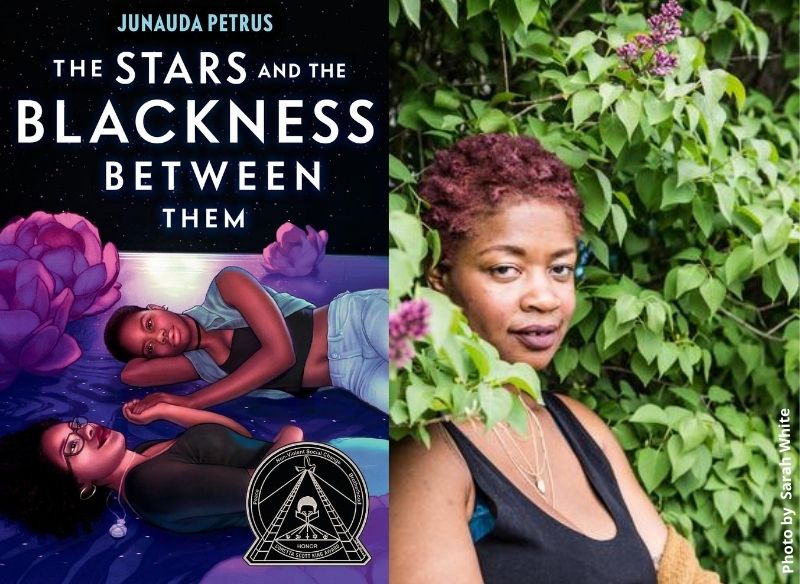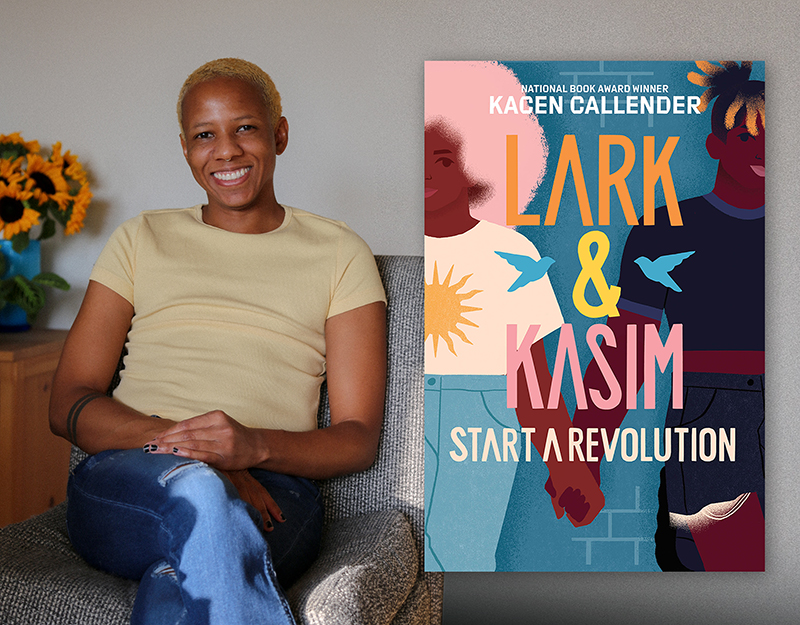The Power of Writing Down a Goal, a guest post by Anita Kharbanda
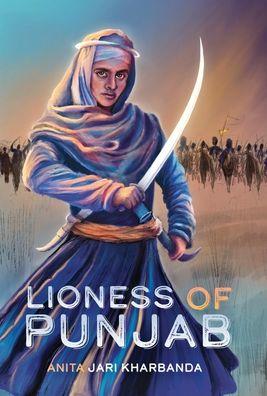
When I was young, I thought writing books was for people with PhDs in English who attended Ivy league universities. And authors were definitely not South Asian, no no. We were meant to be doctors, lawyers, and engineers. We kept our heads down, studied hard, and helped keep high-ranking school districts at an A rating based on standardized tests. Or, at least that was the stereotype.
But, one thing was true. Many of us children of South Asian immigrants had parents with strong work ethics forging their way in a foreign country. They taught us that education in a practical field guaranteed us stability. It would make life easy and happy. And all they wanted was for their kids to be blessed, happy, healthy, and prosperous.
ADVERTISEMENT
ADVERTISEMENT
I wanted the same thing. I was good at math, and graduated with my Bachelors of Science in Industrial Engineering. Since then I have worked in supply chain. There is fulfillment in a steady income, and contributing to my family’s needs and stability. I work in a flexible environment, and I derive satisfaction from my career. But creativity has always thrummed in my bones. In high school I was an all-state alto two singer in the choir. I had balanced focusing on my education while leaning into my creativity. And, I’d been encouraged to, by my parents.

When I was in high school a book called Arranged Marriages came out by Chitra Banerjee Divakaruni. A few close friends and I read it. This was the first book I’d read written by a South Asian woman and published in America. Then, a few years later, in college, Interpreter of Maladies by Jhumpa Lahiri was published. I had been reading books for years with American raised girls similar to me perhaps in personality or in their interests, but none of them looked like me, or ate Indian food, or grew up in bilingual homes. The characters in those books didn’t know how to do bhangra, and they didn’t eat puri aloo, or paratha on Sunday mornings. They weren’t the children of South Asian immigrants in America.
With the release of Arranged Marriages and Interpreter of Maladies, I suddenly became aware of the possibility that there could be characters in books like me, or my family, or friends. In college I thought, if I ever write a story, a Sikh woman would be at the forefront of the action, and if I tell it in her voice, through all her challenges and triumphs, young adults like me would see the unique way she views her place in the world. And maybe, they’d see a piece of themselves in her too. Still, I never actually believed I’d write that story.
I carried on reading stories by South Asian women. There was The Namesake by Jhumpa Lahiri. Much later, as South Asian stories increased in numbers, I read The God of Small Things by Arundathi Roy. There were Her Name is Kaur edited by Meeta Kaur, The Twentieth Wife by Indu Sundaresan, and An Ember in the Ashes by Sabaa Tahir. There were too many to count, and I devoured them all. And though I was a voracious reader, it still hadn’t fully occurred to me that I’d like to write stories with characters like me one day.
Life rolled along throughout reading the above books and more. I lost a treasured family member, married my dear husband several years later, had two children who my heart bursts with love for, and then lost another special family member. This is the duality of life. There is beauty and pain at once. A close friend suggested I journal for the flux of emotions I felt. Journaling expanded into writing for a well-known South Asian magazine. Then I wrote a memoir based on letters between my two family members. I hadn’t even realized I was writing a memoir until I’d started putting the letters in sequence, and writing a story in between them. This memoir was special to me, and initially I planned to publish it. Ultimately though, it was private and I decided not to publish. But it sparked an interest in writing more novels. I also wanted my children to see me pouring myself into a craft that I was passionate about, so they’d learn from it.
In 2017 I scribbled down a SMART goal in my journal to publish a novel in 2022. I then promptly forgot about the goal, until stumbling onto it recently.
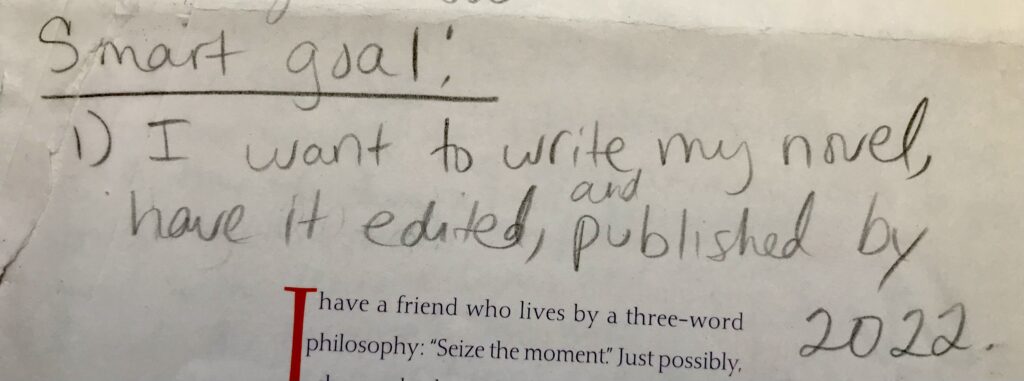
Around the time that I wrote down this goal, I read The Palace of Illusions by Chitra Banerjee Divakaruni as part of a book club with friends. I loved that she wrote about an unsung, historical Hindu woman. I thought, wow, I’d love to do that for Sikh women—a thought similar to the one I had in college all those years before. But this time writing a book was within reach. After all, I’d already written a memoir. Then, I saw an old book of my mother’s on my bookshelf. There was a Sikh female warrior on the cover, and it was written entirely in Punjabi. The book was not about Mai Bhago, the main character of my debut, but it made me remember her, and inspired me to write a story about her. Mai Bhago was the first female Sikh warrior, and my debut, Lioness of Punjab, is based on her life. It comes out on September 17th, 2022.
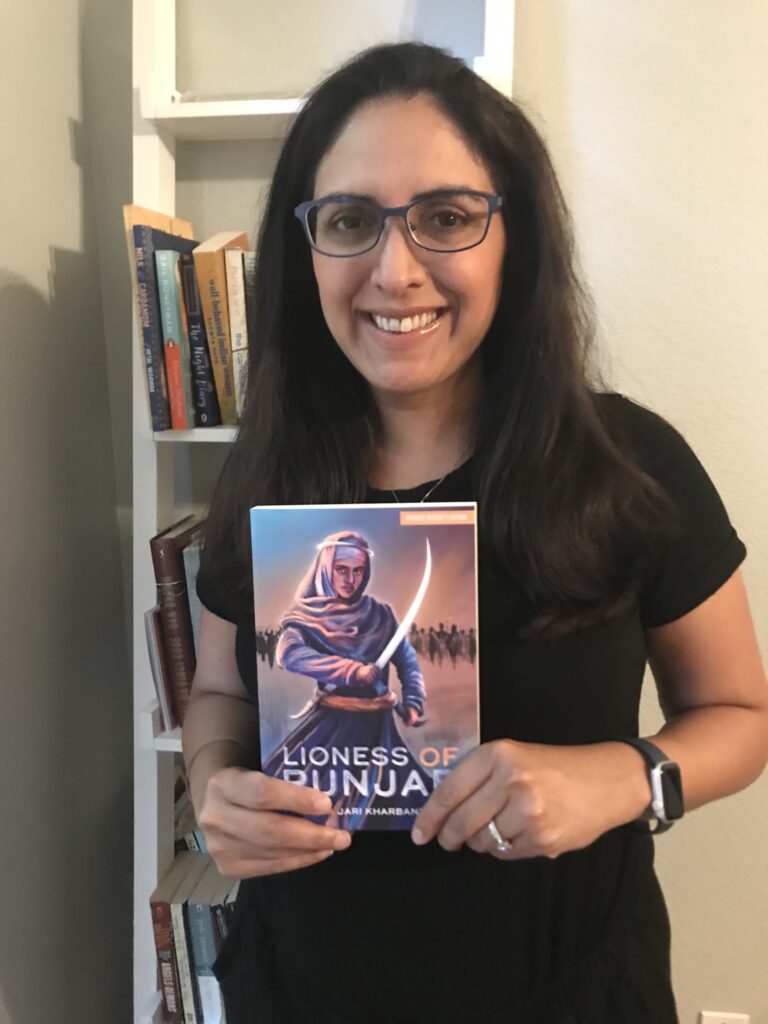
Write down your goals and dreams, friends. They happen, sometimes in the most roundabout and unique ways. Put pen to paper with your deepest desires, and watch them burst into fruition.
Meet the author
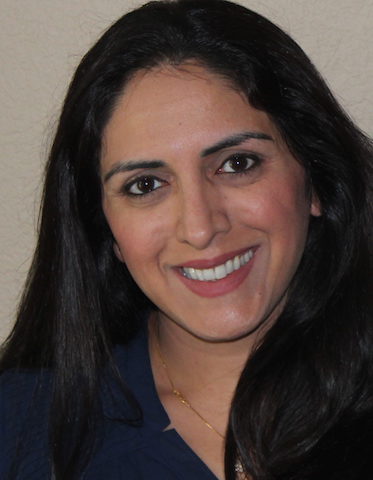
Anita Kharbanda is an Indian-American engineer by trade, and a storyteller by heart. She lives in North Texas with her loving husband and two sons. An avid lifelong reader of all kinds of fiction, she revels in seeing her children do the same.
The healing power of letters filled with family history inspired Anita to start writing. She now writes the kinds of stories she’s devoured through the years, with one difference. She promised herself she’d write stories about the characters she dreamed of seeing in books growing up, and lift the voices of those who go unheard.
When she is not working, writing or reading, she can be found playing board games with her family, watching her sons’ sports games, or baking. She loves to travel with her family, but admits she sleeps coziest at home in her own bed. A warm cup of chai, reading a good book, and cuddles with her children are her zen.
ADVERTISEMENT
ADVERTISEMENT
She is represented by Jennifer Lyons, and Yali Books will be publishing her debut YA novel, LIONESS OF PUNJAB. The story is told from the perspective of Mai Bhago, the first female, Sikh warrior.
2) https://linktr.ee/anita_kharbanda_78
instagram and tiktok: anita_kharbanda_78
twitter: @jarianita
About Lioness of Punjab
“We will fight here,” I commanded the warriors. “We are strong. We will have no fear. As Sikh warriors, we are ready to fight for justice. Vahiguru Ji Ka Khalsa! Vahiguru Ji Ki Fateh!”
It is the winter of 1705, and the tenth Guru of the Sikhs is under attack by the armies of the mighty Mughal Emperor, Aurangzeb. Under siege and isolated, Guru Gobind Singh Ji’s men are exhausted beyond measure, and forty soldiers decide to head home. Back in the villages of Punjab, these forty men are met by a fiery Sikh woman-a warrior who has been preparing all her life for this very moment-who leads the deserters back to the Guru. This is the story of that warrior, the fierce Mai Bhago, who chose the sword to symbolize her unwavering loyalty and devotion to her people and her faith.
This energetic coming-of-age young adult novel brings us closer to Mai Bhago-a woman revered in the Sikh community and beyond-to imagine her growing to embrace her many roles in a way that was entirely her own and, in the process, becoming a shining inspiration for young women everywhere.
ISBN-13: 9781949528718
Publisher: Yali Publishing LLC
Publication date: 09/17/2022
Age Range: 14 – 18 Years
Filed under: Guest Post
About Amanda MacGregor
Amanda MacGregor works in an elementary library, loves dogs, and can be found on Twitter @CiteSomething.
ADVERTISEMENT
ADVERTISEMENT
SLJ Blog Network
One Star Review, Guess Who? (#202)
This Q&A is Going Exactly As Planned: A Talk with Tao Nyeu About Her Latest Book
More Geronimo Stilton Graphic Novels Coming from Papercutz | News
Parsing Religion in Public Schools
ADVERTISEMENT




